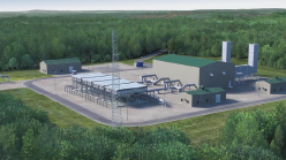The INGAA Foundation commissioned Gulf Interstate Engineering (GIE), a professional engineering firm, to undertake a study and make an objective determination of appropriate widths for safe, maneuverable pipeline construction rights-of-way. To ensure the objectivity of the study, GIE examined current practices and safety codes, surveyed pipelines and industry contractors, and analyzed the right-of-way widths needed for a typical interstate pipeline construction spread for a range of pipe diameters. GIE’s analysis evaluated the storage space requirements for excavated soil, size of construction equipment, pipeline materials, and the varied operations of the workforce.
GIE found that the diameter of the pipe determines the baseline width for a safe and maneuverable construction right-of-way. Four baseline construction right-of-way widths should be permitted, based on pipe diameter.
Pipe Diameter Right-of-way Widths
(Inches) (Feet)
8 to 16′ 80
18 to 24 95
30 to 36 110
40 to 42 125
GIE believes that these baseline widths should be adopted, with increases or decreases for special conditions. Consideration should be given to the effects of different soils, terrain, construction techniques, and other factors that could play a role in selecting the widths needed to safely construct pipelines.
Use of these baselines will not alter FERC’s existing procedures for increasing or decreasing construction workspace at specific locations for special conditions (e.g., wetlands, side hill cuts, stream crossings, etc.). The study recognizes that widths may need to be narrowed in sensitive environmental areas, sites with cultural or historic significance, and densely populated areas.





